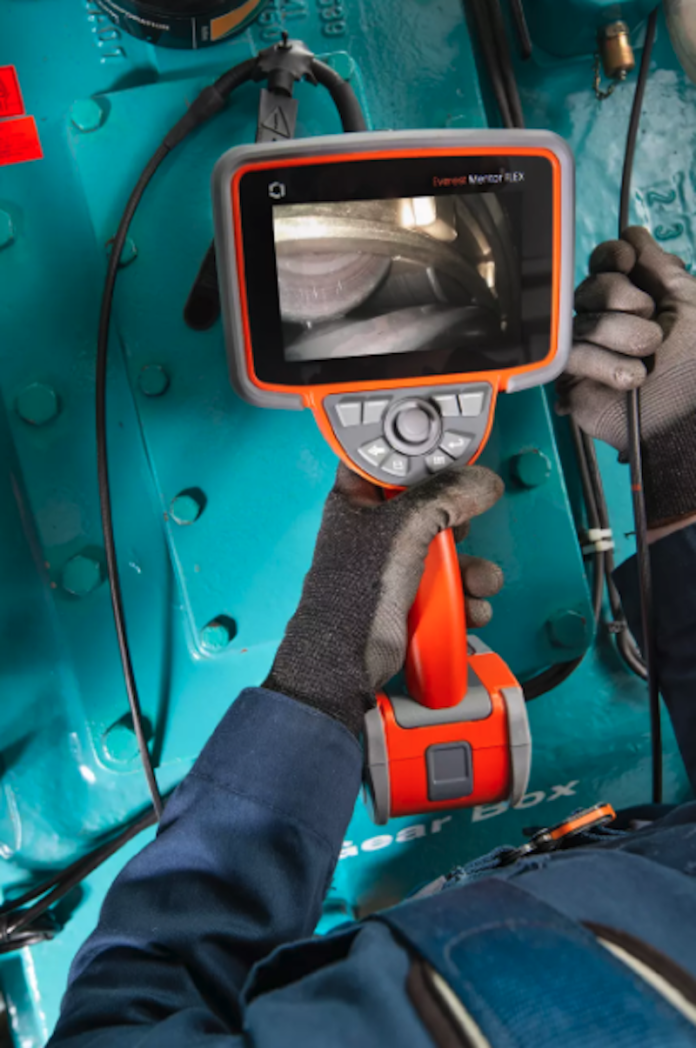Traditional industrial testing methods have long been shaping product quality and safety across industries. These methods often involve manual processes, relying on human inspection and analysis. While effective in many cases, traditional methods can be time-consuming, labor-intensive, and prone to human error.
Fortunately, several new and emerging technologies are transforming industrial testing methods like borescopes and ultrasonic testing.
These include advanced technologies like artificial intelligence, machine learning, and automation, which can be used to achieve significant improvements in efficiency, accuracy, and cost-effectiveness. Let us explore how.
Artificial Intelligence (AI) and Machine Learning
Artificial intelligence (AI) and machine learning (ML) are playing increasingly important roles in industrial testing. AI systems can be used to automate repetitive and time-consuming tasks, such as data collection, analysis, and reporting.
ML algorithms can learn from historical data to identify patterns, predict failures, and optimize testing processes.
AI-powered testing can significantly reduce human error and improve efficiency. For example, AI systems can accurately identify defects in products that may be missed by human inspectors.
Additionally, ML algorithms can be used to predict equipment failures, allowing for preventive maintenance and avoiding costly downtime. By automating routine tasks and improving accuracy, AI and ML can help organizations streamline their testing processes and reduce costs.
Internet of Things (IoT) and Smart Sensors
The Internet of Things (IoT) refers to the interconnected network of devices that can collect, transmit, and analyze data. In the context of industrial testing, IoT devices, such as sensors and actuators, can be integrated into various systems to enable real-time data collection and monitoring.
Smart sensors can be deployed throughout industrial facilities to gather data on parameters such as temperature, pressure, vibration, and material properties.
This data can be transmitted to a central system for analysis, allowing for real-time monitoring of equipment performance, detection of anomalies, and predictive maintenance. IoT-enabled systems can also be used to automate testing processes, reducing the need for manual intervention.
IoT sensors have a wide range of applications in various industries. In manufacturing, they can be used to monitor production lines, detect defects, and optimize processes.
In construction, IoT sensors can be used to track the progress of projects, monitor equipment performance, and ensure safety. By leveraging IoT technology, organizations can gain valuable insights into their operations and improve efficiency, quality, and safety.
Robotics and Automation
Robotics and automation are playing an increasingly important role in industrial testing. Robotic systems can be equipped with sensors, cameras, and other equipment to perform tasks such as inspection, measurement, and analysis.
These systems can operate autonomously or with minimal human supervision, reducing the need for manual labor.
Robotic automation offers several advantages over traditional testing methods. It can increase precision and accuracy, as robots can perform tasks with greater consistency than humans. Additionally, robotic automation can reduce labor costs and improve efficiency by automating repetitive and time-consuming tasks.
Robotic systems are being used in a variety of industrial testing applications. For example, robots can be deployed for non-destructive testing, such as ultrasonic testing and radiographic inspection.
They can also be used for material analysis, such as measuring dimensions and inspecting surfaces. By incorporating robotic automation, organizations can enhance their testing capabilities and improve product quality.
Advanced Materials and Nanotechnology
The development of new materials with advanced properties is driving innovation in industrial testing. These materials can offer improved performance, durability, and sensitivity, enabling more accurate and efficient testing.
Nanotechnology, the manipulation of matter at the atomic and molecular scale, is playing a significant role in the development of new materials for industrial testing.
Nanotechnology-enabled materials can have unique properties, such as increased strength, conductivity, and sensitivity. For example, nanomaterials can be used to create highly sensitive sensors for detecting defects and contaminants.
Advanced materials are being used in various industrial testing applications. They can be incorporated into sensors, testing equipment, and other components to enhance performance and accuracy.
For example, nanomaterial-based sensors can be used for real-time monitoring of equipment health and detection of anomalies. Additionally, advanced materials can be used to create more durable and reliable testing equipment.
Augmented and Virtual Reality (AR/VR)
Augmented and virtual reality (AR/VR) technologies are transforming the way industrial testing is conducted. AR/VR can be used to provide remote access to testing sites, improve training and education, and enhance collaboration.
AR/VR can enable remote inspections of industrial facilities, allowing experts to assess equipment and processes from a distance. This can reduce the need for on-site visits and improve efficiency.
Additionally, AR/VR can be used to create immersive training experiences, providing trainees with hands-on practice in a simulated environment. This can reduce training time and improve knowledge retention.
AR/VR has various applications in industrial testing. For example, it can be used to visualize complex data sets, simulate testing scenarios, and provide real-time guidance to technicians.
AR/VR can also be used to improve collaboration between teams located in different locations, enabling them to work together on testing projects more effectively.
Conclusion
The field of industrial testing is undergoing a significant transformation, driven by advancements in technology. Artificial intelligence, machine learning, IoT, robotics, advanced materials, and AR/VR are all playing a crucial role in revolutionizing the way testing is conducted.
These technologies offer numerous benefits, including increased efficiency, accuracy, and cost-effectiveness. By automating tasks, improving data analysis, and enhancing inspection capabilities, these technologies can help organizations improve product quality, reduce costs, and stay competitive.
However, the adoption of new technologies in industrial testing also presents challenges. The initial investment in new equipment and software can be significant, and there may be concerns about data security and privacy.
Additionally, as technology evolves, there may be a need for ongoing training and upskilling of the workforce.
Despite these challenges, the future of industrial testing looks promising. The continued development and adoption of new technologies will drive further innovation and improvement in the field. By embracing these advancements, organizations can position themselves for success in the competitive global marketplace.
[ad_2]
Source link


